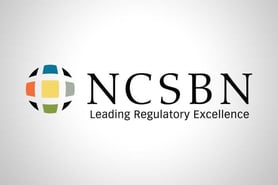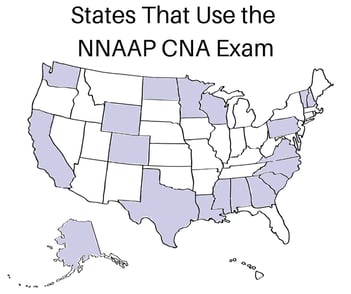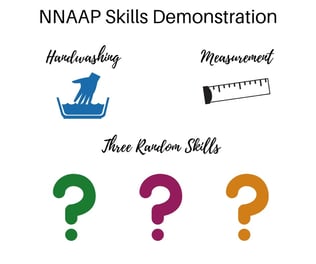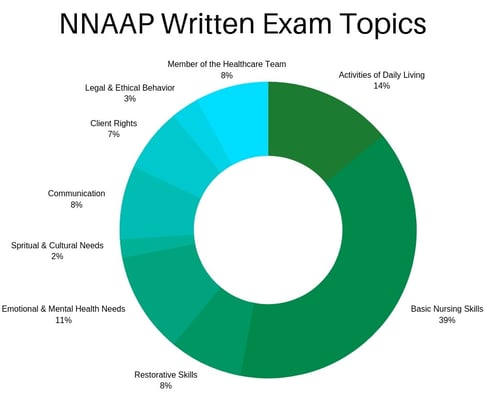CNA Certification | Health Science
NNAAP Exam: What Is It & How Do You Prepare Students?
For nearly 10 years, Bri has focused on creating content to address the questions and concerns educators have about teaching classes, preparing students for certifications, and making the most of the iCEV curriculum system.
The National Nurse Aide Assessment Program exam is an industry certification developed by the National Council of State Boards of Nursing to measure competency in nurse aide skills.
If a student passes the assessment, they earn a certification and join their state’s nurse aide registry.
This registry is used by employers to confirm potential workers meet the federal and state requirements for employment as a Certified Nurse Aide (CNA).
So, if your students want to become CNAs, it’s imperative for them to pass this exam!
But how can you help your students succeed?
On this page, we’ll dive into how the assessment is structured and how you can prepare students for the test.
But before we get into those details, it’s important to understand which states use the NNAAP test and which ones don’t!
Who Uses the NNAAP Exam?

While this exam is referred to as the national program, some states actually have their own CNA programs and standards (such as Florida).
Overall the NNAAP exam is used in 21 states to determine whether a person can be added to their state nurse aide registry.

|
Alaska Colorado Louisiana Maryland |
Minnesota Mississippi New Hampshire North Dakota Rhode Island |
Vermont Washington Wisconsin Wyoming |
While each of these areas use the NNAAP exam, the testing process can differ from state to state.
This is because some states have different requirements before a student can sit for the exam.
How Is the NNAAP Exam Structured?

The NNAAP exam is made up of a written portion and a skills demonstration portion. Both portions of the exam are administered on the same day.
In order to pass the exam and become certified, a student must be successful in both areas.
About the NNAAP Written Exam
The written exam is developed by the NNAAP, however it is administered by Pearson VUE -- a well-known provider of computer-based assessments.
The written exam contains 70 multiple-choice question across three domains. The NNAAP has created a test plan that outlines how each domain is weighted in terms of scoring the test.
The domains are broken down as follows:
Domain I. Physical Care Skills
- Activities of Daily Living (14%)
- Basic Nursing Skills (39%)
- Restorative Skills (8%)
Domain II. Psychosocial Care Skills
- Emotional and Mental Health Needs (11%)
- Spiritual and Cultural Needs (2%)
Domain III. Role of the Nurse Aide
- Communication (8%)
- Client Rights (7%)
- Legal and Ethical Behavior (3%)
- Member of the Healthcare Team (8%)
On test day, students get two hours to complete the assessment. Depending on your state, there may be slight variations in time allowed and how the assessment is given.
Once a student has completed the written exam, they will move on to the skills demonstration portion.
About the NNAAP Clinical Skills Demonstration
The skills evaluation portion of the assessment is designed to look and feel like an actual caregiving scenario that the candidate will encounter on the job.
In each scenario the “client” is played by another person taking the exam. Very often candidates are required to play the client for another student, though this may differ from state to state.
Overall, the NNAAP lists 23 potential skills that a nurse aide may be asked to demonstrate during the skills evaluation exam:
- Hand hygiene (hand washing)
- Applies one knee-high elastic stocking
- Assists to ambulate using transfer belt
- Assists with use of bedpan
- Cleans upper or lower denture
- Counts and records radial pulse
- Counts and records respirations
- Donning and removing PPE (gown and gloves)
- Dresses client with affected (weak) right arm
- Feeds client who cannot feed self
- Gives modified bed bath (face and one arm, hand and underarm)
- Measures and records electronic blood pressure
- Measures and records urinary output
- Measures and records weight of ambulatory client
- Performs modified passive range of motion (PROM) for one knee and one ankle
- Performs modified passive range of motion (PROM) for one shoulder
- Positions on side
- Provides catheter care for females
- Provides foot care on one foot
- Provides mouth care
- Provides perineal care for female
- Transfers from bed to wheelchair using transfer belt
- Measure and records manual blood pressure
On exam day, the evaluator will give the student a list of five skills chosen for them to perform.
The NNAAP notes that handwashing will always be one of these five skills. In addition, the NNAAP requires each student to perform at least one “measurement” skill, such as recording weight or blood pressure.
The other three skills are randomly chosen from the list provided by the NNAAP.
To pass the skills demonstration exam, a predetermined number of steps must be correctly demonstrated for each skill.
In addition, the skills include “Critical Element Steps” that must be performed correctly or the student will not pass the skill -- even if all other steps were completed.
In total, the student has 30 minutes to demonstrate all five skills. During the skills test, the student is expected to act as if they are working with a real client and should act in a professional manner.
Overall, while the NNAAP has standardized most details of the exam across all of the states, it’s important that you review your state’s information to check for any differences.
But even with knowing all of these details, how do you prepare your students to pass the exam?
How Do You Prepare Students for the NNAAP Exam?

Preparing students for the NNAAP nurse aide exam can easily overwhelm even the most confident health science teacher.
When it comes to certification exams, many instructors use test prep materials.
While practice tests and study guides can help you determine if students are ready for the exam, they don’t help you teach the content!
Because of this, the best way to help your students have success on the exam includes two pieces.
First, you need to teach the foundational skills and knowledge your students will need to have in order for success in their careers.
This means you should not just reference the test plan when creating your lessons. It’s important to draw from your own healthcare experience and include lessons on skills and concepts that might not even be on the exam. Doing so sets your students up for more success in the future!
Then, once you’ve taught those concepts, switch gears and focus more specifically on exam prep and reinforcing areas that your students need to learn.
The key to success for you and your students is to seamlessly balance these two aspects throughout your course.
But how can you do that?
Some teachers create their own lessons, activities, and assessments to build their syllabus. This is an excellent way to provide an extremely customized curriculum from day one until test day.
However, building your course from scratch can take a lot of extra time -- something you likely don’t have!
That’s why so many health science instructors have switched to a system they can use for both teaching everyday classes and preparing students for CNA certification!
Prepare Your Students for the NNAAP Exam with HealthCenter21

Health science instructors across the country use HealthCenter21 as a primary instructional material to teach their students and prepare them for the NNAAP CNA exam.
HealthCenter21 is a digital curriculum system built to empower you to help your students succeed in the classroom, certification exams, and their careers.
This is made possible with thousands of ready-to-use resources, classroom management tools, assessments, student tracking features, and more.
In addition, we’ve mapped the curriculum content within HealthCenter21 to the NNAAP test plan and clinical skills list!
Want to learn exactly how to use HealthCenter21 to prepare your students for the exam (and their careers)?
Click below to download the NNAAP CNA certification success guide!



